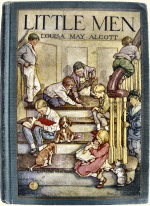 I didn’t pursue a Child and Adolescent fellowship, but would’ve if I hadn’t used up my be-a-student quota on a couple of residencies and analytic training. But that idea of developmental deviation stayed with me. Years later I was working in a Child and Adolescent clinic and saw how important that concept really is. Most of the adolescents were brought because of behavioral problem or depressive symptoms and the main thrust of our work with the kids and their families was to help them get back to the business of developing an identity suitable for adult challenges.
I didn’t pursue a Child and Adolescent fellowship, but would’ve if I hadn’t used up my be-a-student quota on a couple of residencies and analytic training. But that idea of developmental deviation stayed with me. Years later I was working in a Child and Adolescent clinic and saw how important that concept really is. Most of the adolescents were brought because of behavioral problem or depressive symptoms and the main thrust of our work with the kids and their families was to help them get back to the business of developing an identity suitable for adult challenges.  When I woke·up after retiring and found how much the academic-industrial alliance had fueled something of a medication-mania, I was most surprised about how it had its fingers in the C&A literature and practice. The Bieder·mania epidemic of the Bipolar Child, the general use of the atypical antipsychotics in disruptive and developmentally challenged children, and the continued use of the SSRI andidepressants in adolescents in spite of the weak to negative clinical trials and Black Box Warning were unwelcome surprises. It was if the distinction between child and adult psychiatry, between children and adults, had eroded and the kids were being treated as little adults – reminiscent of the adultomorphic children of previous centuries.
When I woke·up after retiring and found how much the academic-industrial alliance had fueled something of a medication-mania, I was most surprised about how it had its fingers in the C&A literature and practice. The Bieder·mania epidemic of the Bipolar Child, the general use of the atypical antipsychotics in disruptive and developmentally challenged children, and the continued use of the SSRI andidepressants in adolescents in spite of the weak to negative clinical trials and Black Box Warning were unwelcome surprises. It was if the distinction between child and adult psychiatry, between children and adults, had eroded and the kids were being treated as little adults – reminiscent of the adultomorphic children of previous centuries.
I was disappointed that the official responses to our recent RIAT article [Restoring Study 329: efficacy and harms of paroxetine and imipramine in treatment of major depression in adolescence] from the American Academy of Child and Adolescent Psychiatry [AACAP] and its journal [JAACAP] were so focused on their paper itself [aacap and jaacap respond…], rather than to the broader issues like data transparency of clinical trials or overmedicating children. The American Academy of Child and Adolescent Psychiatry [AACAP] is meeting in San Antonio Texas this week [AACAP’s 62nd Annual Meeting], and to my knowledge, Study 329 isn’t on the docket, though some members argue it should be [AllCapsUnlocked]. One of the authors of that 329 paper, Karen Dineen Wagner, is slated to be installed as president elect this week.
I remember that galaxy and regret the many losses! Great commentary. Could you think of posting a cemetery of names of those who did see the child as a child with his or her own set of developmental needs? Trauma is a word on some but if one remembers Anna Freud (for all the issue with her relationship with her father) worked with English children after their experiences in WWII.Nothing was perfect but you hit the nail on the head. Selma Fraiberg? Peter Blos?